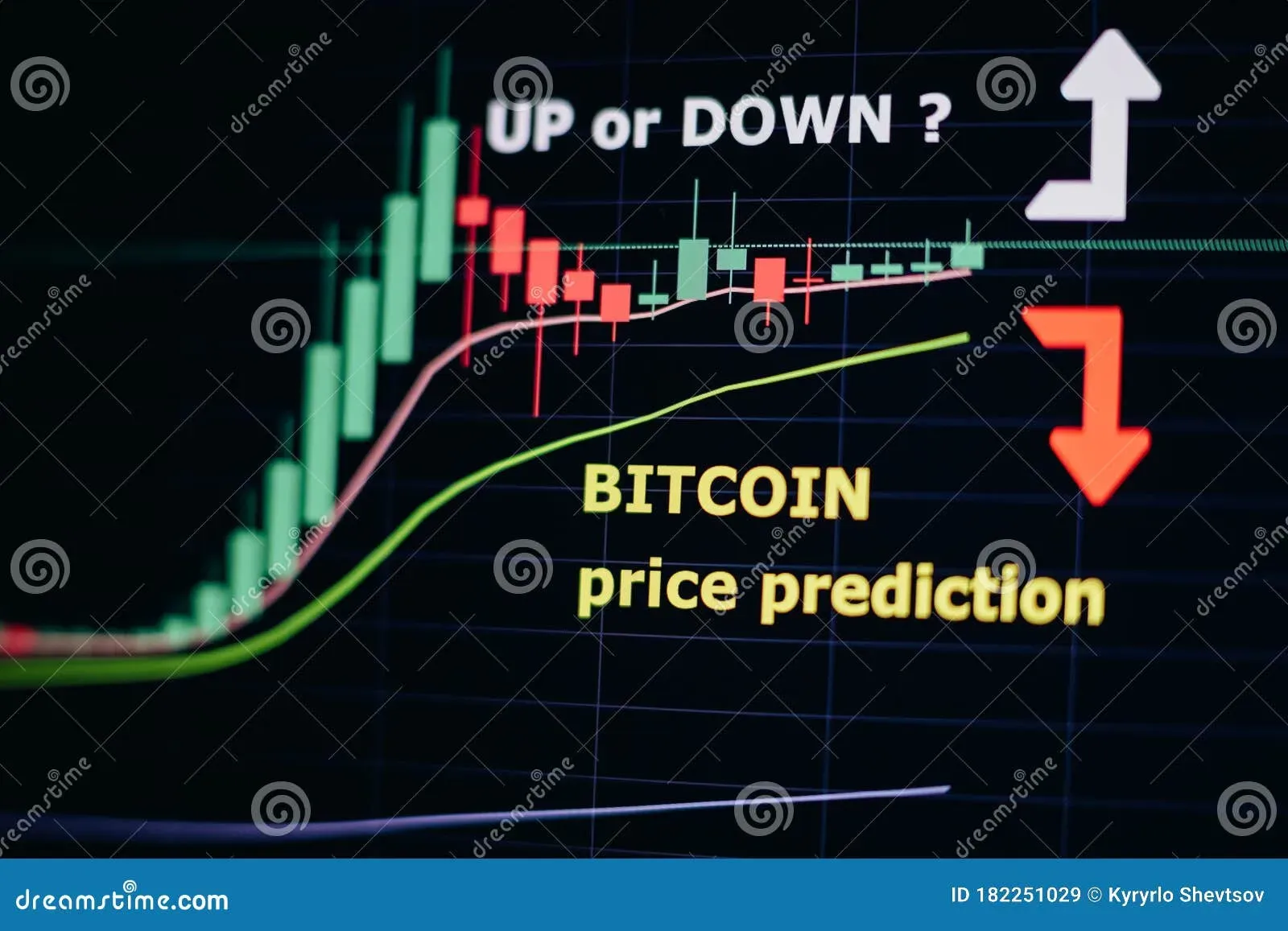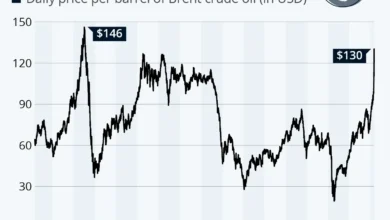Bitcoin Market Trends: Insights and Future Predictions

Bitcoin market trends have become increasingly volatile as major Wall Street players express apprehension about potential economic downturns. On February 8, Bitcoin (BTC) experienced an intraday high of $79,300, indicating a momentary recovery as investors seized the opportunity following a price dip. This upward momentum was shared by other altcoins, with Ethereum (ETH) rising by 4.28% and Ripple (XRP) climbing 9.31%. Despite these positive movements, analysts from Goldman Sachs are warning of a unstable future for the equities market, downgrading their outlook and raising recession probabilities to 45%. As concerns about a Wall Street recession grow, crypto investment strategies may need reevaluation to understand how they align with the trajectories of Bitcoin price analysis and altcoin performance in this shaken market.
The fluctuations observed in the Bitcoin ecosystem reflect broader financial trends influencing investor sentiment. Recently, Bitcoin and various alternative cryptocurrencies have shown resilience amidst Wall Street’s rising fears of economic instability. Major financial institutions, including Goldman Sachs, have started to revise their projections on market performance, indicating a shift in investment strategies might be necessary. Moreover, the relationship between cryptocurrency values and traditional assets underscores the need for a nuanced understanding of market dynamics. As we delve into this landscape, exploring the correlation between Bitcoin’s price movements and macroeconomic shifts will be crucial for those looking to navigate this tumultuous period.
Understanding Bitcoin Market Trends
The current Bitcoin market trends reveal a complex interplay of investor sentiment, economic forecasts, and market volatility. On one hand, Bitcoin managed to stabilize around the $79,300 mark, indicating resilience amidst broader economic concerns linked to an impending Wall Street recession. As major financial institutions, including Goldman Sachs, forecast a 45% chance of a recession, Bitcoin holds a pivotal position as both a refuge and a risk asset. Investors are increasingly drawn to Bitcoin as they navigate the tumultuous landscape dictated by the performance of traditional equities.
Moreover, the substantial gains seen in altcoins alongside Bitcoin, such as Ethereum and Ripple, signify a potential shift in crypto market dynamics. Notably, altcoins like JasmyCoin and Zcash exhibited remarkable performance, suggesting that investor interest could be diversifying beyond Bitcoin. An analysis of Bitcoin’s correlation with these emerging altcoins may provide insights into broader market sentiments and future price movements.
Bitcoin Price Analysis Amidst Economic Uncertainty
Analyzing Bitcoin’s price trends amid prevalent economic uncertainty is crucial for current and potential investors. The recent fluctuations in Bitcoin’s price illustrate the effects of macroeconomic factors, including Wall Street’s cautious outlook. The downward adjustment of the US stock market projections by institutions like Goldman Sachs highlights the interconnectedness of Bitcoin’s value with traditional market performance. As Bitcoin trends upward in light of favorable buying conditions, understanding these price movements can equip investors with strategic insights to capitalize on market conditions.
Additionally, detailed price patterns in Bitcoin amidst rising altcoin performance should not be overlooked. As investors track not only Bitcoin but also Bitcoin’s impact on altcoin trends, an integrated approach to crypto investment strategies becomes essential. A focus on price analysis can guide investments during economically volatile periods, ensuring that savvy investors remain ahead of market fluctuations.
On the technical front, the potential of Bitcoin to influence further price movements in altcoins exemplifies an evolving market landscape. As Bitcoin stabilizes at critical support levels, altcoins have also witnessed upticks that may mirror or build upon Bitcoin’s performance. This phenomenon could reinforce the idea of Bitcoin acting as a market leader, dictating trends that may benefit other cryptocurrencies.
The Impact of Wall Street on Crypto Investments
The influence of Wall Street on crypto investments cannot be understated, especially in the context of an anticipated recession. With analysts from major institutions sounding the alarm on potential threats to economic stability, the cryptocurrency market faces both challenges and opportunities. The warnings from Goldman Sachs and others about a prolonged bear market for US equities further complicate the landscape for crypto investors, who must balance traditional investment risks with the nascent cryptocurrency realm.
However, this situation creates a unique opportunity for cryptocurrencies like Bitcoin and altcoins to be seen as alternative investment vehicles. Historically, during times of economic downturn, there has been a noticeable shift where investors turn to assets perceived as less correlated with traditional markets. If Wall Street continues to falter, cryptocurrencies could see a surge in interest as investors seek refuge in decentralized assets that might outperform traditional equities.
Goldman Sachs Economic Outlook and Cryptocurrency Response
The recent Goldman Sachs economic outlook, which includes a heightened probability of a recession, has significant implications for cryptocurrency markets. Investors are scrutinizing not only Bitcoin but the entire crypto sphere, responding to predictions that suggest a potential shift in asset allocation strategies. As Goldman Sachs revises its forecasts, indicating a conservative approach to equities, the cryptocurrency market could attract capital seeking higher returns amidst diminishing confidence in traditional markets.
Additionally, the implications of Goldman’s outlook could prompt many investors to adopt new crypto investment strategies. With analysts suggesting that cryptocurrencies may serve as a hedge against inflation and economic instability, entities seeking to diversify their portfolios will find Bitcoin and altcoins appealing. This sentiment could result in increased volatility and trading volumes within the cryptocurrency market, particularly if institutional investors respond positively to macroeconomic signals.
Navigating Altcoin Performance in a Shifting Economy
With Bitcoin leading the charge, the performance of altcoins like Ethereum and Ripple paints a broader picture of the cryptocurrency market. These altcoins have exhibited notable gains, signaling a shift in investor focus and a potential resurgence of interest in alternative cryptocurrencies. As Wall Street’s uncertain economic predictions unfold, understanding altcoin dynamics becomes integral for investors wishing to navigate potential growth opportunities beyond Bitcoin.
Moreover, the relationship between Bitcoin’s price movements and altcoin performance holds vital importance in crafting successful investment strategies. As the cryptocurrency market operates in high correlation with risk assets, monitoring altcoin performances can offer insights into market trends and investor sentiment. As we move forward, a comprehensive approach that evaluates both Bitcoin and altcoins will prove indispensable for those looking to take advantage of evolving market conditions.
Federal Reserve Policies and Their Effect on Cryptocurrencies
The Federal Reserve’s policies are a critical factor affecting cryptocurrencies such as Bitcoin as well as altcoins. As the probability of interest rate cuts grows—currently estimated at 44%—the outlook for risk assets, including cryptocurrencies, could see considerable shifts. The historical context of previous rate cuts enacting an influx of capital into speculative assets suggests a potential favorable outcome for Bitcoin and its counterparts in the event of loosening monetary policy.
As the Fed contemplates its next moves, pressure will mount not only from the market but also from the Trump administration, heightening the anticipation surrounding imminent changes. Should the Fed adopt a dovish stance, it could lead to bullish trends in both Bitcoin and altcoins. Investors should remain vigilant, as swift responses to Fed announcements may influence short-term price fluctuations, thereby impacting longer-term strategies in the cryptocurrency space.
Strategies for Investing in Bitcoin During Economic Downturns
Developing robust crypto investment strategies during economic downturns is crucial for achieving success in a volatile environment. Bitcoin, often viewed as a safe haven asset, may attract a broader range of investors, seeking reliability in uncertain times. Strategies focusing on dollar-cost averaging and diversification into altcoins can mitigate risks associated with market volatility, providing a balanced approach to investing.
Furthermore, monitoring market trends and adjusting strategies based on macroeconomic conditions can significantly enhance investment outcomes. With the anticipated recession, holding Bitcoin as part of a balanced portfolio could yield favorable results, particularly if market dynamics shift positively. Education and awareness of market indicators are key components for investors aiming to thrive amid economic instability.
Market Sentiment and its Influence on Cryptocurrency Trends
Market sentiment plays an integral role in shaping cryptocurrency trends, particularly for Bitcoin and altcoins. As Wall Street’s shifting sentiment resonates throughout financial markets, its effects permeate into the realm of cryptocurrencies. Investors’ perceptions of economic stability directly influence their investment decisions, illustrating the impact of major market narratives on Bitcoin’s price evolution as well as altcoins.
This interconnectedness highlights the need for investors to stay informed about broader market movements and sentiments, which may guide their actions and strategies within the crypto space. An acute understanding of how pessimistic or optimistic perceptions can drive price fluctuations in Bitcoin and altcoins is essential for effective trading and investing strategies in the cryptocurrency market.
The Future of Bitcoin in a Volatile Economic Landscape
The future of Bitcoin as a leading cryptocurrency in a volatile economic landscape hinges on macroeconomic conditions, regulatory developments, and investor behavior. With the potential for a recession looming on the horizon, the dynamics of Bitcoin’s demand will likely be influenced by broader economic indicators and market confidence. This evolving scenario presents both challenges and opportunities for Bitcoin’s sustained growth and market role.
Additionally, innovations within blockchain technology and mainstream adoption of cryptocurrencies can further alter Bitcoin’s trajectory in upcoming years. Investors are encouraged to remain agile, adapting to shifts in both the economic climate and technological advancements connected to Bitcoin and altcoin performance. The intersection of macroeconomic factors and digital currency innovation will ultimately shape the future of Bitcoin in the global financial landscape.
Frequently Asked Questions
What are the current Bitcoin market trends and their implications for investors?
Currently, Bitcoin market trends show steady performance, with Bitcoin reaching an intraday high of $79,300. This resilient performance reflects investor confidence in capitalizing on price dips. Moreover, with altcoins like Ethereum and Ripple also gaining value, the outlook remains cautiously optimistic amidst broader economic concerns.
How do Wall Street recession concerns impact Bitcoin price analysis?
Wall Street recession concerns have a significant impact on Bitcoin price analysis. As Goldman Sachs has raised the recession probability to 45%, Bitcoin and altcoins could experience volatility. Historically, Bitcoin has shown a correlation with risk assets, meaning economic downturns could lead to price fluctuations. However, a dovish Fed response may also boost cryptocurrency value.
What is the relationship between altcoin performance and Bitcoin market trends?
Altcoin performance often closely follows Bitcoin market trends. Recently, altcoins like JasmyCoin and Zcash saw substantial gains alongside Bitcoin’s steady rise. Investors often look at Bitcoin’s market performance as a bellwether for altcoins, leading to higher trading volumes and price movements in tandem.
How does Goldman Sachs’ economic outlook influence crypto investment strategies?
Goldman Sachs’ economic outlook, particularly its neutral stance on US stocks, encourages investors to consider alternative assets like cryptocurrencies. With increasing economic uncertainty, many are turning to Bitcoin and altcoins as part of their investment strategies, seeking refuge from potential declines in traditional markets.
What factors could lead to a bullish Bitcoin market amid recession fears?
Amid recession fears, factors such as potential interest rate cuts by the Federal Reserve could create a bullish Bitcoin market. As the derivatives market indicates a higher likelihood of rate cuts, reduced borrowing costs may drive investors towards riskier assets like Bitcoin and altcoins, creating upward price momentum.
| Key Point | Details |
|---|---|
| Market Movement | On February 8, Bitcoin reached an intraday high of $79,300, while Ethereum rose by 4.28%, XRP by 9.31%, and Binance Coin by 3.3%. Notable surges included JasmyCoin with 23.8% and Core by 21.8%. |
| Wall Street Concerns | Analysts expressed concerns about potential tariffs seen as a black swan event, with Goldman Sachs raising recession probabilities to 45%. They also downgraded US stock outlook to ‘neutral’. |
| Broader Market Correlation | Bitcoin and altcoins traditionally move in tandem with risk assets like US stocks and are influenced by market conditions. |
| Potential Optimism | In a recession, the Federal Reserve might intervene with rate cuts, which could positively impact Bitcoin and altcoins as seen during the COVID-19 pandemic. |
Summary
Bitcoin market trends indicate a volatile yet promising future as major investors weigh market risks amid financial concerns. On one hand, the rising resistance on Wall Street, with analysts linking significant downturns and fears of a recession, could lead to decreased confidence in traditional equities. On the other hand, interventions from the Federal Reserve, expected in the event of a recession, may act as a catalyst for Bitcoin and altcoins, reigniting investor interest and potentially boosting market sentiment. Thus, understanding these dynamics is crucial for any stakeholders navigating the current cryptocurrency landscape.




